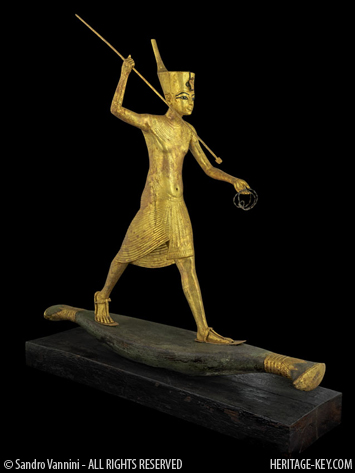 One remarkable tale from ancient history is that of the site of Pyla-Kokkinokremos on the southeast coast of Cyprus. It existedfor only 50 years, at a time of devastation throughout the ancient world.
One remarkable tale from ancient history is that of the site of Pyla-Kokkinokremos on the southeast coast of Cyprus. It existedfor only 50 years, at a time of devastation throughout the ancient world.
Trying to make sense of this site is difficult and the story reminds me, in some ways, of the ill-fated 16th century AD English colony of Roanoke in North Carolina.
A few weeks back Professor Dimitri Nakassis, of the University of Toronto, presented the latest research on the site at an event at the Royal Ontario Museum. In the following days Heritage Key did an extensive interview with him and got a few pictures, which Im showing here.
What is Pyla-Kokkinokremos?
 It is a short lived town on the southeast coast of Cyprus. It was settled ca. 1250 BC and abandoned ca. 1200 BC. No more than a generation or two would have lived there. The population is estimated to be between 500 and 1,500 people, living in some 200 houses on the site.
It is a short lived town on the southeast coast of Cyprus. It was settled ca. 1250 BC and abandoned ca. 1200 BC. No more than a generation or two would have lived there. The population is estimated to be between 500 and 1,500 people, living in some 200 houses on the site.
The houses are fairly simple modular structures, said Professor Nakassis, one storey tall with a stone foundation and mudbrick superstructure. Archaeologists have recently found the remains of an ancient harbour and believe that Pyla-Kokkinokremos has an extensive trading relationship with the outside world, particularly with Egypt.
The town existed in a time of turmoil throughout the Eastern Mediterranean. Around 1200 BC the Mycenaean Civilization, in Greece and Crete, collapses. A wave of humanity known at the Sea People descends on the Near East. Before long the Egyptian state disintegrates, cities in the Levant are destroyed and a dark age is ushered in where no great empires exist.
Heritage Key reported a few months back that the Sea Peoplemay have founded a kingdom at Tayinat near Syria. So it is in this context of catastrophic events that archaeologists have to examine the site.
Who are these people?
 Now, this is where things get interesting. Archaeologists used to believe that this site was settled by a group of Mycenaean refugees (or invaders depending on your perspective). The thinking went that they created and fortified the settlement. It then follows that the Mycenaeans took over the island of Cyprus, bringing with them Greek language and culture.
Now, this is where things get interesting. Archaeologists used to believe that this site was settled by a group of Mycenaean refugees (or invaders depending on your perspective). The thinking went that they created and fortified the settlement. It then follows that the Mycenaeans took over the island of Cyprus, bringing with them Greek language and culture.
However, recent work done by the Pyla-Koutsopetria Archaeological Project (PKAP), which is investigating sites around the modern day village of Pyla, is casting doubt on this idea. Professor Nakassis told the crowd that a survey they conducted at Pyla-Kokkinokremos found that only 8% of the pottery (that can be dated to this time) was Aegean. In fact the team found nearly three times as much Egyptian ware -yet nobody suggests that the Egyptians founded a colony there!
They also found that the so-called fortification wall is really very weak. The defensive aspect of the site is exaggerated, said Nakassis. The wall itself is not imposing in appearance or in reality.
Indeed the picture he showed on the screen showed a pile of stones that looked like they could be toppled over with a kick or two. I asked Nakassis what the purpose of such a weak wall could be. Its hard to say, he said. The wall could have had some role in town planning or could just be a marker showing where the settlement ends. In any case the evidence is pointing to this town being inhabited by native Cypriots, not Mycenaean invaders.
How Does the Site End?
 Badly, it seems.
Badly, it seems.
Archaeologists, before the PKAP investigations, found bronze, silver and gold metal hoards on the site. They werent buried for ceremonial reasons.
People realized they are going to have to flee, they couldnt take everything of value with them, said Nakassis. They had time to bury their valuables in the hope, ultimately unrealized, that they could return to retrieve them.
Why they couldnt return is a mystery. Its possible that something bad happened to them (ie they were killed) or that some kind of political change made it impossible for them to go back.
I asked Professor Nakassis whether there wasa battle a last stand or otherwise. He said that he doesnt have enough evidence to prove that but its certainly a possibility.
The sitewas not re-inhabited after this. (Making it hard to tell who the people were fleeing from)
Thissort of abandonment is quite unusual, usually what happens is that houses or settlements are rebuilt, said Nakassis. But that didnt happen with Pyla-Kokkinokremos. People dont go back to it – its not re-occupied.
Changing History
The recent discoveries at this site are forcing archaeologists to rethink the history of Cyprus. Before the PKAP excavations, archaeologists believed that this was a Mycenaean settlement, strongproof ofan invasion. With the evidence suggesting that this is unlikely it forces a big question to be asked if there was no Mycenaean invasion how did the Greeks get to Cyprus?
The answer in short is we dont know.
Nakassis talked about this in his lecture and in the interview. One possibility is that it happened gradually over time. Rather than a sudden invasion, people could have landed peacefully, integrating themselves into society and bringing the Greek language with them.
We know thatCyrpus becomes Hellenized in the period after 1000 BC. Long-term the Greek language is a pretty stable element of Cypriot history, said Nakassis. Theres an 11th century BC obeloi found at Palaepaphos-Skales (western part of the island) to a man named Opheltas a name that sounds Greek.
Another questions that arises from this research -if there was no Mycenaean invasion who is responsible for the destruction on the island?
One gruesome event (that Louise Steel documents in the book Cyprus before history) is at the site of Enkomi in north-west Cyprus.
At Enkomi the sudden, cataclysmic nature of the twelfth-century destructions is indicated by the remains of children who were trapped and killed by falling mudbrick (from a building).
So if the Mycenaeans were not invading than somebody else was wrecking havoc on the island. The Sea People is a tempting group to blame, except that Mycenaean refugees are believed to be an element of this group and the evidence is trending againstMycenaeans being involved.
Its a confusing situation and one that will only be rectified by more research. Stay tuned.



